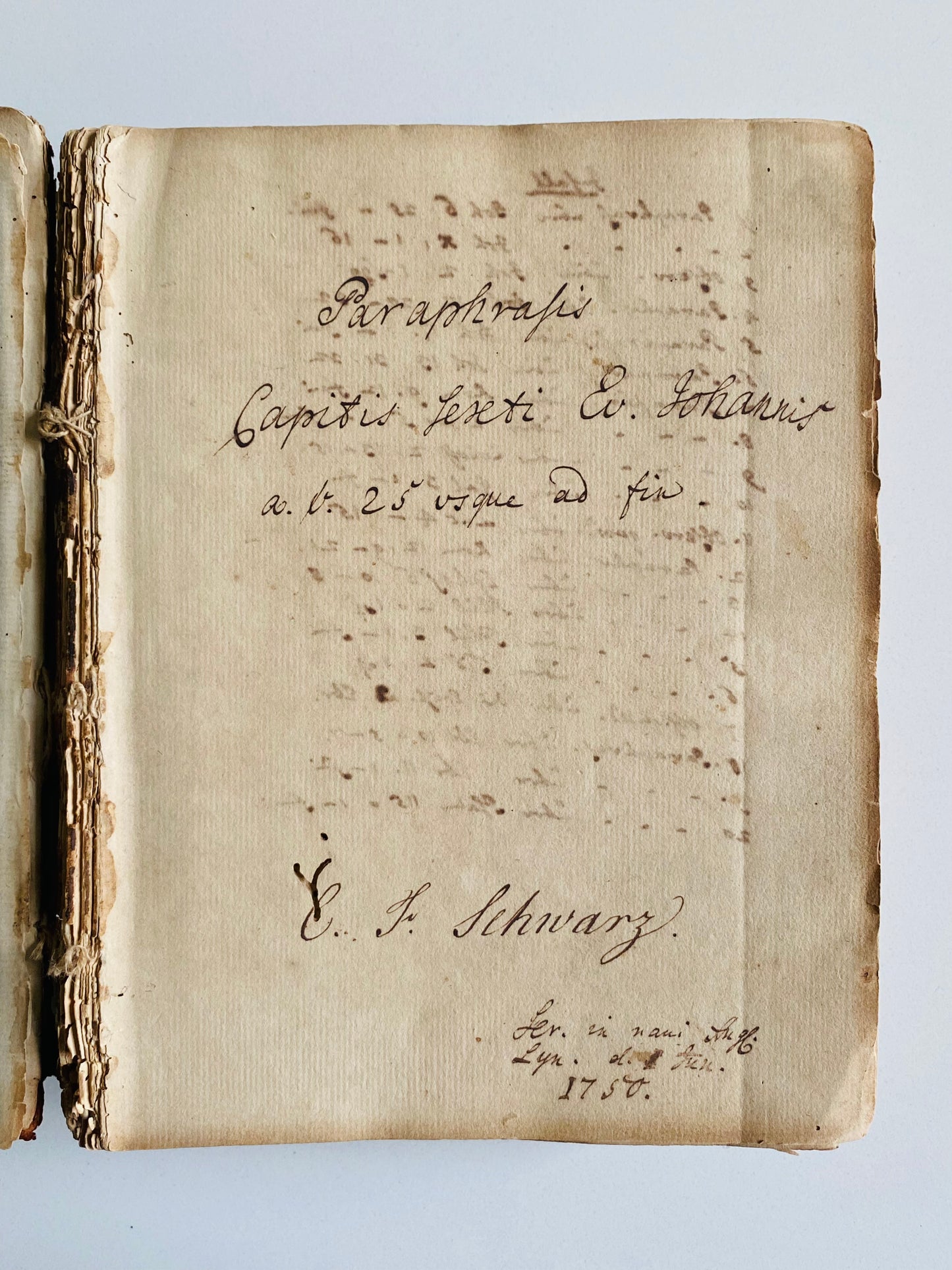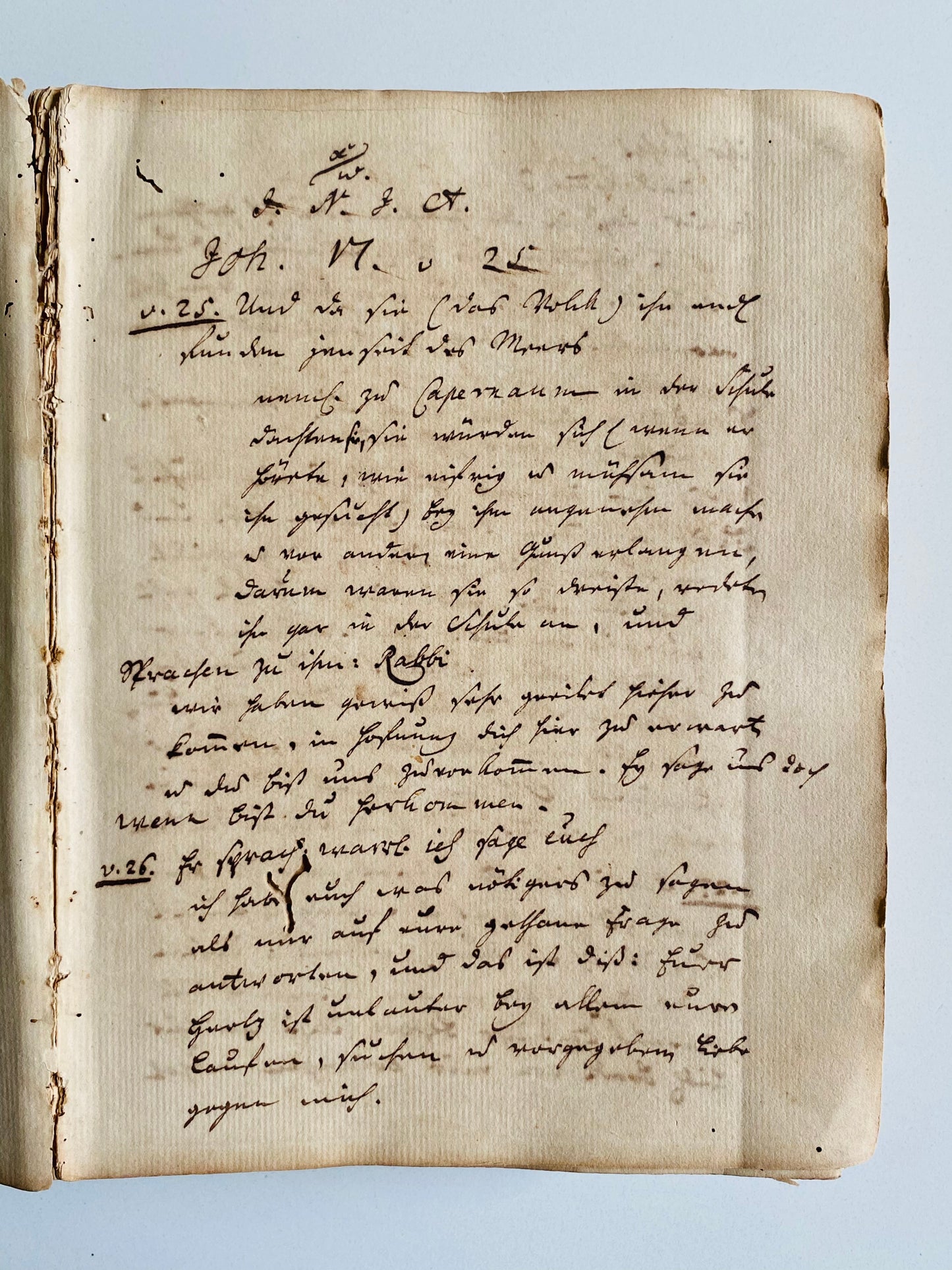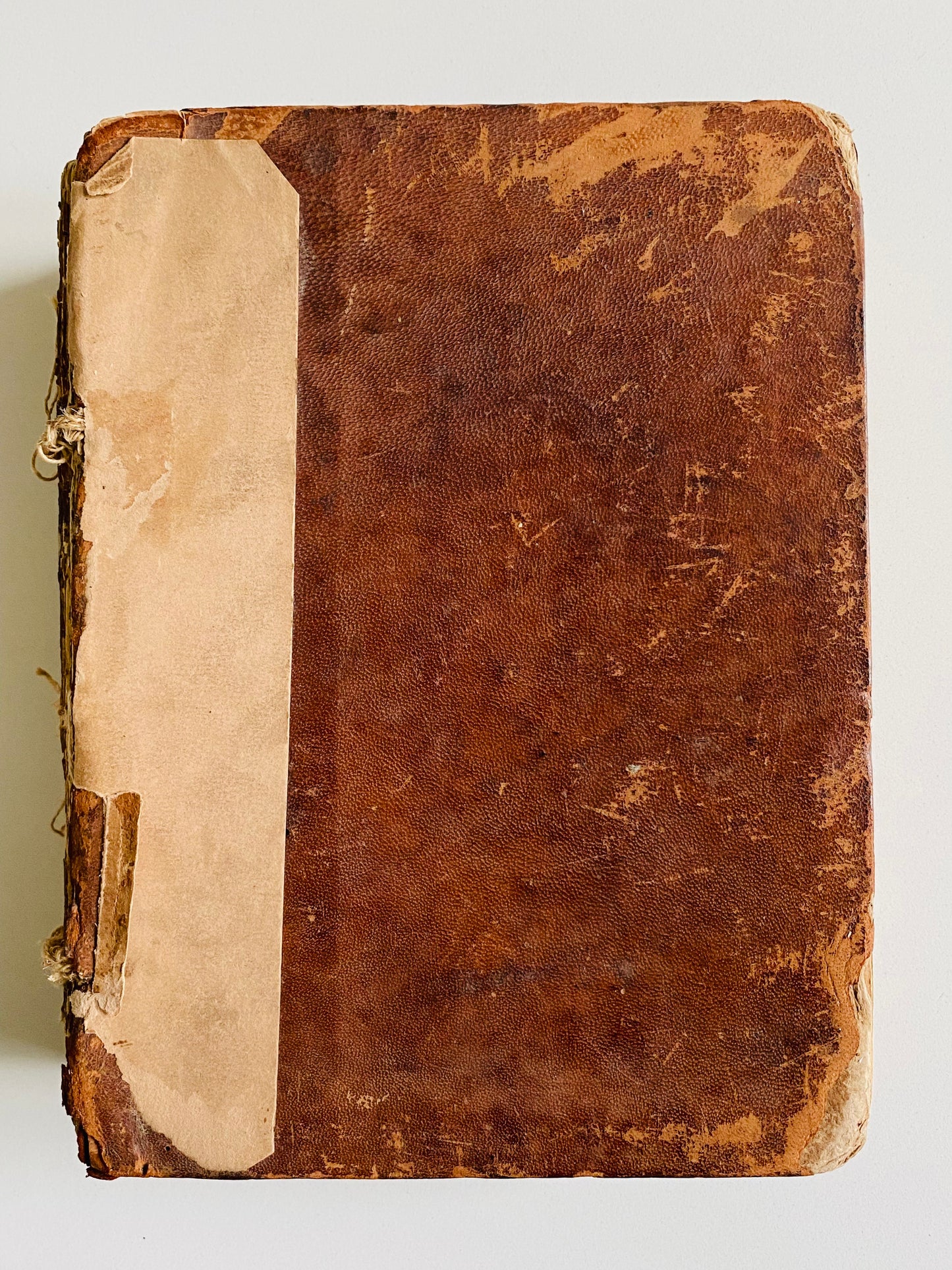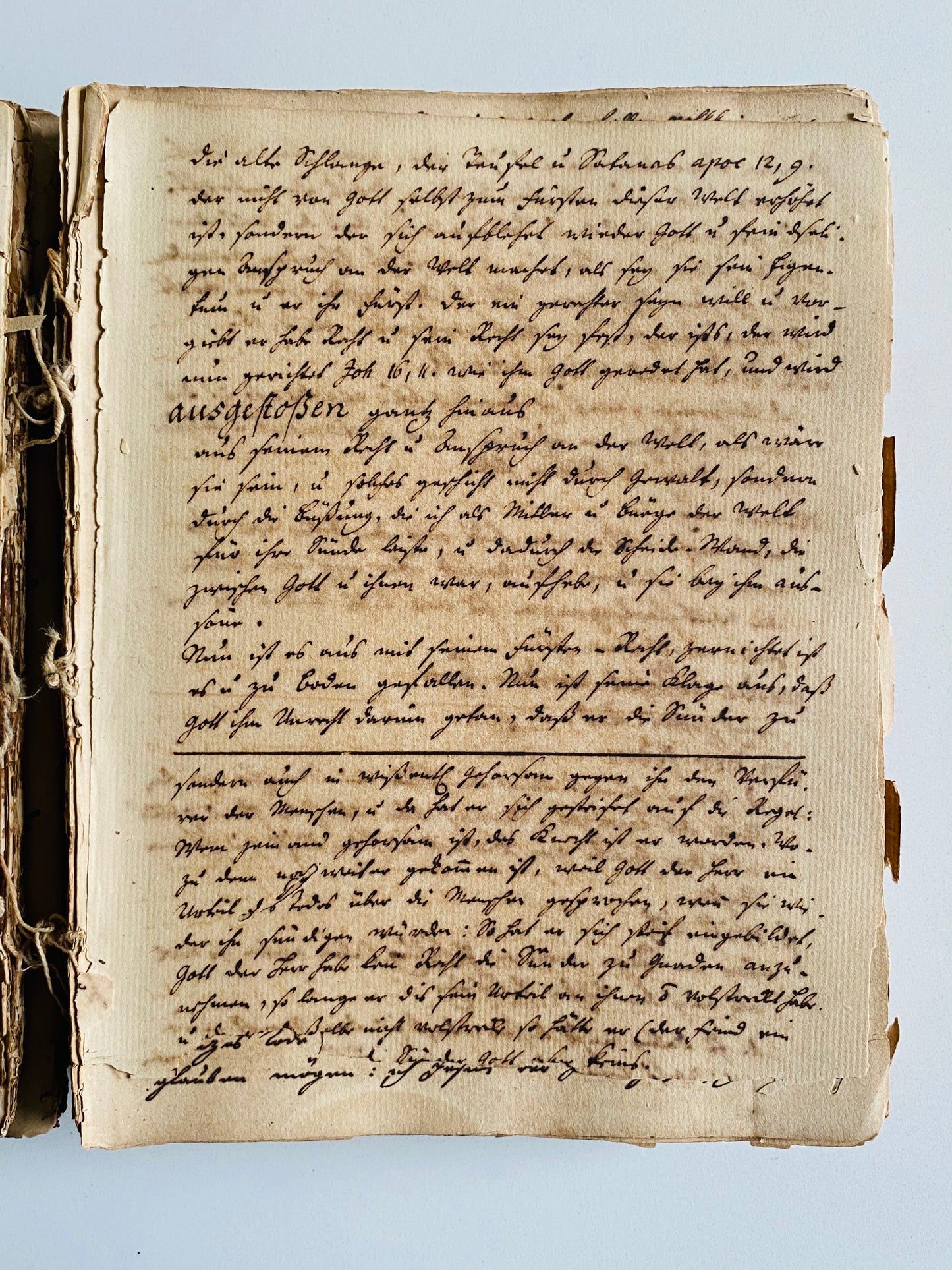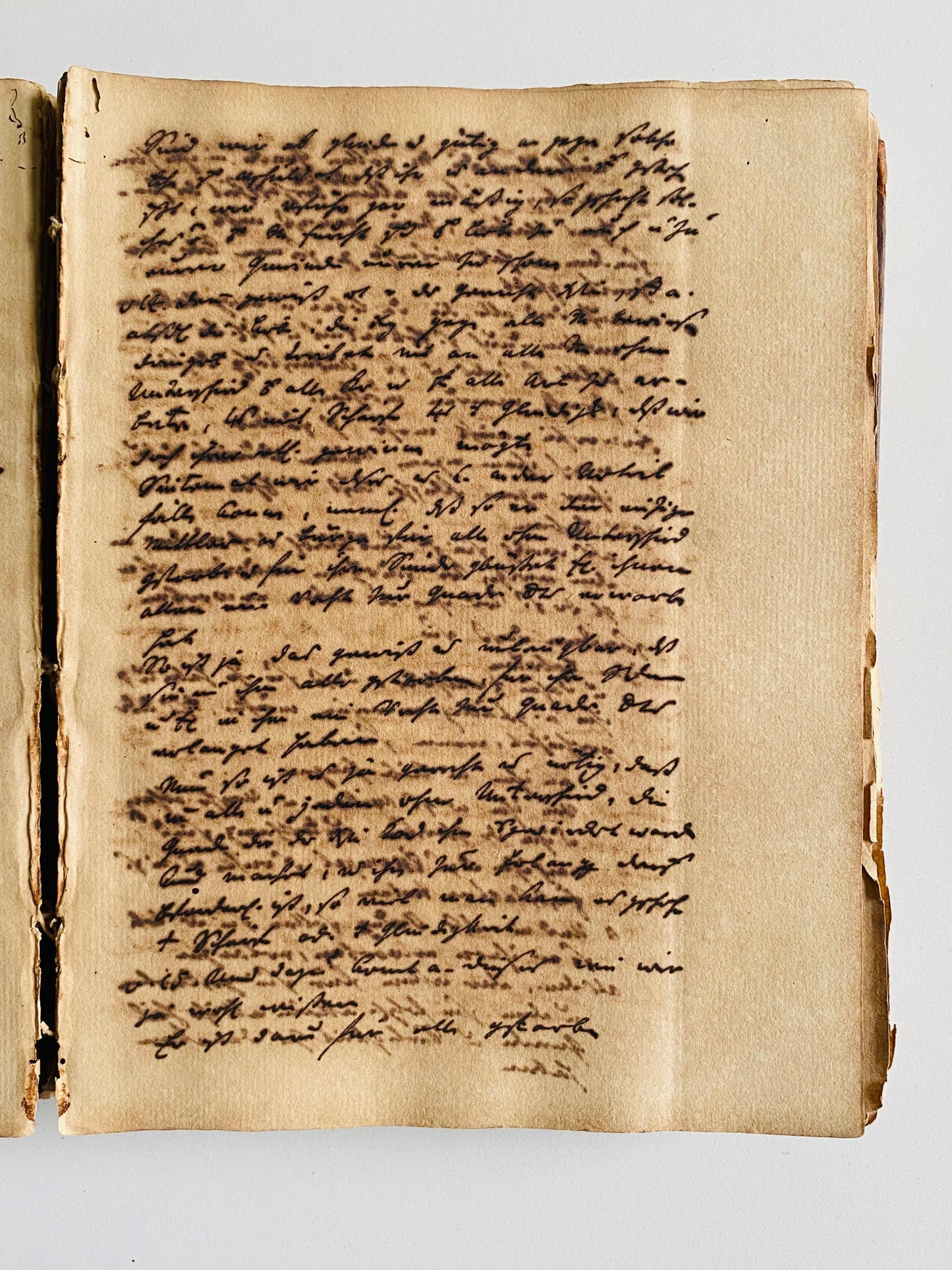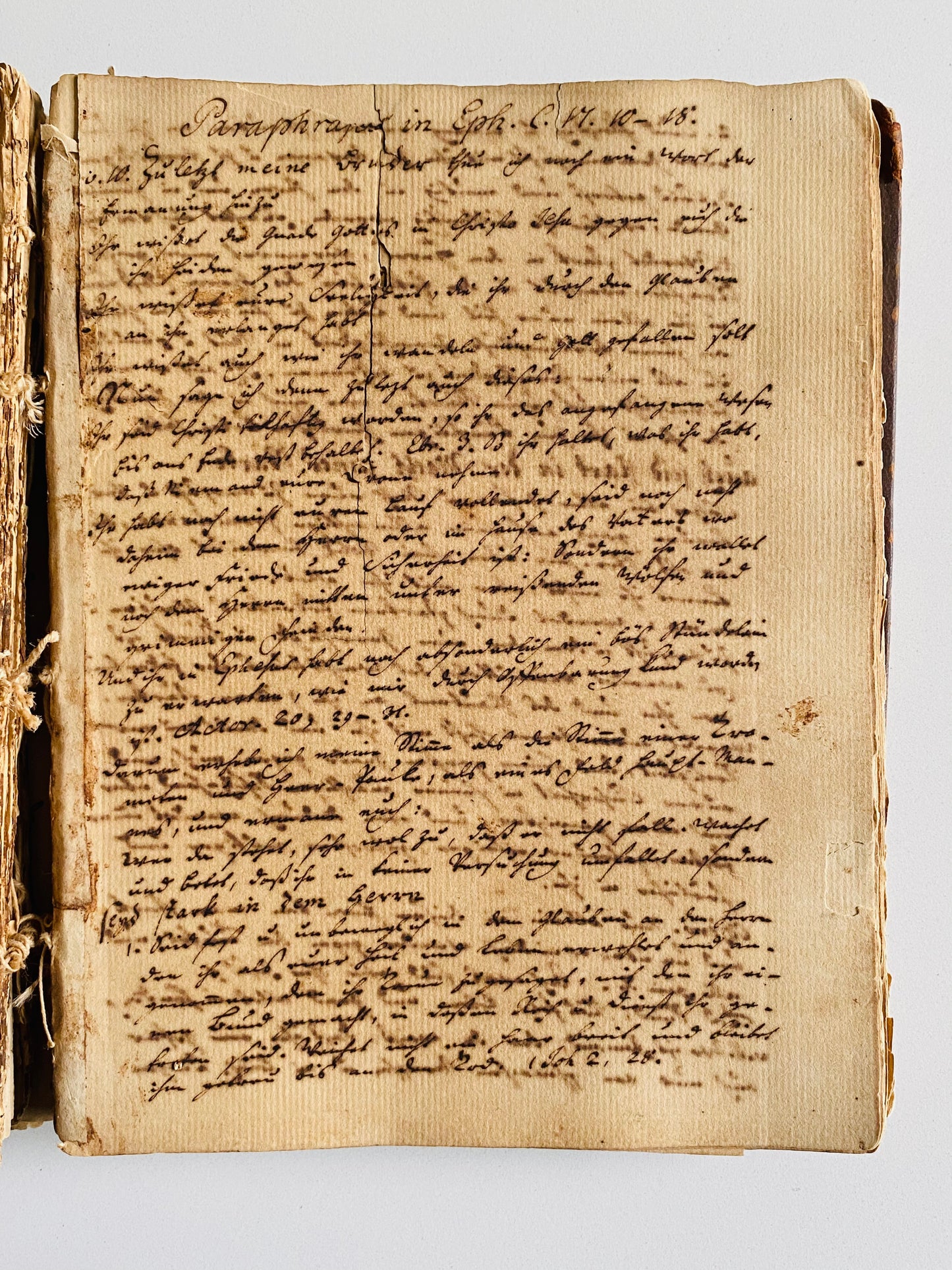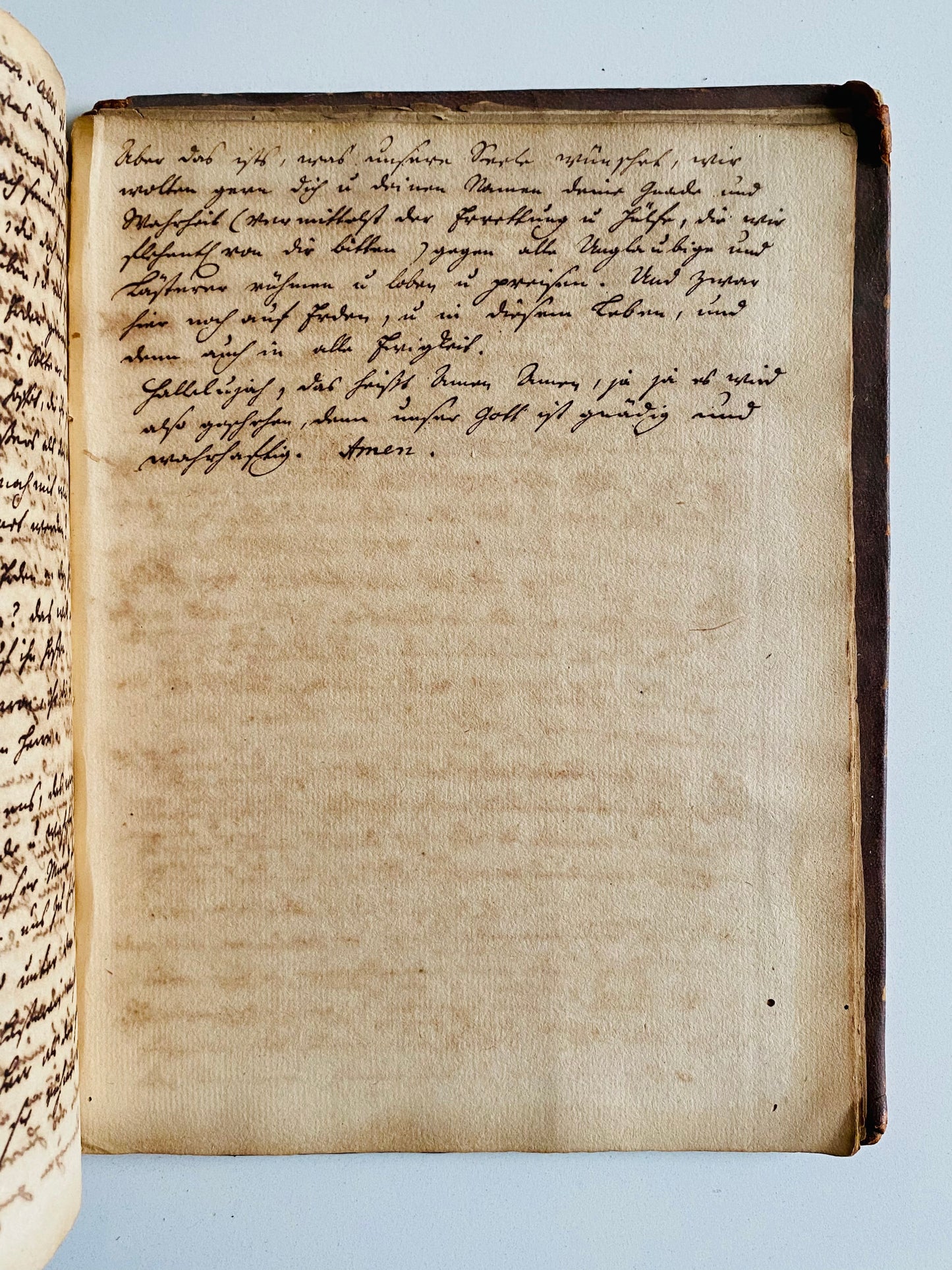Specs Fine Books
1750 CHRISTIAN FRIEDRICH SCHWARTZ. 400pp Unpublished Manuscript of the "Apostle to India."
1750 CHRISTIAN FRIEDRICH SCHWARTZ. 400pp Unpublished Manuscript of the "Apostle to India."
Couldn't load pickup availability
It is highly unusual for truly primary, unpublished documents and manuscripts related to the earliest periods of missionary to come to market.
The present is a 1750 nearly 400 page entirely unpublished manuscript by pioneer missionary to India, Christian Friedrich Schwartz [1726-1798], was composed beginning while he was in England for language training and continued while en route to India.
Born in Prussia, Schwartz was ordained in Copenhagen in 1749. He then travelled to England for language, and arrived in India later in 1750 as a missionary of the Lutheran church. India became his heart home. Laboring in Tranquebar, Trichinopoly, and Tanjore over the course of his forty-eight consecutive years, he did not return home a single time.
A brilliant linguist, in addition to German, Greek, Hebrew, and English, he also acquired Tamil, Telugu, Sanskrit, Persian, Hindustani, Marathi, and Portuguese. He assisted in the translation of the Bible into Tamil.
Schwartz was not the first Lutheran missionary to India. He was preceded by two important German Lutherans, Bartholomäus Ziegenbalg [1683-1719] and Heinrich Plütschau [1678-1747]. All three were products of Halle and the German pietist movement which gave rise to the Moravian revivalists, etc.
Schwartz was originally allied with the Danish Missionary Society, but later served as a chaplain-missionary to the British community in India. Then, in 1767, he began serving under the Anglican Society for the Promoting Christian Knowledge, London.
Schwartz was built for the multi-ethnic community and tensions then present in India. He befriended, respected, and was loved and admired by Hindus, Muslims, and the European settlers in India. Some mission historians have referred to Schwartz as the apostle to South India, after which Carey became the apostle to North India. So influential was Schwartz, that when Leonard Woods preached the sermon at the departure of Adoniram Judson and company for Burmah [1812], the missionaries are urged to lay down their lives in the manner of David Brainerd, John Eliot, and Christian Schwartz. William Carey was not mentioned.
Though estimates vary, by the time of his death, Schwartz was effective in gaining over six thousand Indian converts, both Hindus and Muslims, to Christianity.
Our present manuscript contains the handwritten title in the hand of Schwartz, "Paraphrasis Capitis Leseti Ev. Johannis a. b. 25 vs que ad fin. C. F. Schwarz." It is then notated as having been composed in 1750, also in his hand. The work ended up expanding far beyond the original title.
In over 400 pages, in a very legible German hand, Schwartz translates, paraphrase, and comments on over twenty extended passages, including:
John 6.25 to the End; John 10. 1-16; John 2.1-44; John 12.20-32; John 17.1 to the End; John 13.31, 32; Romans 9.12 to the End; 2 Corinthians 5.1 to the End; Colossians 2.13-15; Galatians 3.1 to the End; Luke 4.1-15; Romans 12.19-21; Ephesians 6.10-18; Philippians 2.1-7; Philippians 3.1 to the End; Titus 2.11-13; Hebrews 10.5-7; Hebrews 11.1 to the End; and Psalm 115.
A work truly worthy of academic investment into translation and scholarly research as it impacts early translation, the pietist and textual world of early missions to India, and the personal and devotional world of one of the truly seminal missionaries to India. This is someone's PhD work and subsequent publication waiting to happen.
Nearly four hundred pages, entirely legible; the volume is disbound; paper fragile and there are occasions where chipping to the pages has led to minor textual loss. This is extremely limited.
Share
